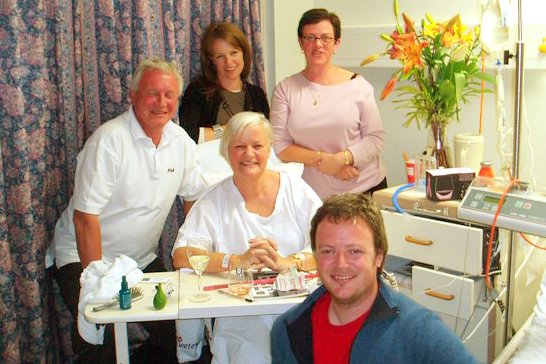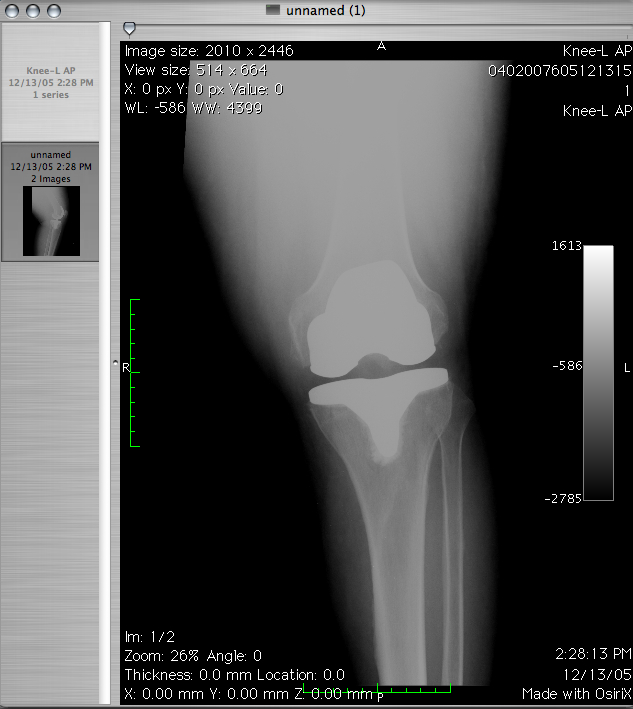 Jordan Brock, FlickrGoing Home At Last
Jordan Brock, FlickrGoing Home At Last
Recovery from a severe injury can take weeks or months, and usually means that even very independent people by necessity become dependent upon others for help.
Daily activities once taken for granted require assistance, such as putting on a sock, or getting help to rise up out of a chair. Yup I've been there, and not too long ago. I would need help doing almost everything for the first two weeks at home and it drove me nuts. It also helped me refine the ability to relax the pain down to a dull roar and to appreciate being home with family, including the dog.
The one thing I wanted most while in the hospital was to get out of the hospital. Don't get me wrong, the nurses and other staffers were great..
However, getting well enough to go home became an all-consuming drive and helped me focus on moving around and doing everything the doctors recommended for improving at each stage of the repair process. It was difficult to remain a positive outlook each time the doctors on morning rounds took off the dressings and I got a good look at my leg. I had to keep telling myself that "Hey, It's still there!" and by doing the walks I can go home sooner (nurses documented each walk on the chart ). I guess the hospital staff becomes an adopted family while you're there - at least if you get good ones like I did.
Tough Going
The hardest things to do were 1) getting out of the bed and 2) getting back into the bed. At first, it took two nurses to help lift me up and put the crutches under my arms. Then, it was a 75ft. trip out of the room and down the hall, turn around and go back. It took more will than I thought I had in me to complete the entire 150 ft. distance. The external fixator holding my leg in place until the actual surgical repair had two stainless steel pins drilled into my femur, through the muscles and two more in the lower portion of my tibia (the one big piece not broken). The fibula was only broken into two pieces, so no bionic hardware back there. Two carbon fiber rods about 18 inches long each were attached to a hinged joint in the middle and to the pins on each opposite end to spread the leg apart to the correct length (the impact had crunched it together - shorter).
The pins made my muscles behave like skewered chickens when I was up on the crutches. Muscles don't like to be forced to contract and stretch with something stuck through them. To keep the pain from getting the best of me, I would imagine I was riding on the bike in happier times. Just cruising along a nice, curvy two-lane mountain road, leaving the Corvette Club behind me in my dust. It worked until I became so tired I was ready to fall down. Talk about getting a bad feeling...
When I got to the point of exhaustion, it was very hard to keep the pain levels from rising. It became necessary to slow down a little and pay more attention to where the halfway point in the three daily walks. If I had to go more slowly or rest along the way, I would do it to remain on top of pain through breathing control, working on proper form on the crutches, joking with one of the nurses, whatever it took to both be distracted from the pain, yet focused on what I was doing to avoid a fall or get too tired to make it back to the room.
Yay Home Team !
It was not possible for me to change the dressings on the wounds on my leg, so it was my wife and son who took over the nursing chores. I can't thank them enough for helping me when I couldn't help myself.The leg wasn't pretty for a long time and they stepped up. Love you guys.
There's no time to feel sorry for yourself when there's a CPM machine to crawl over to later, the dog needs to be fed and let outside, to later make a call to the insurance company and see why they aren't paying out a proper value on the totalled bike.
Have your team leave stuff for you to do when they have to leave for work or errands. It will help keep you busy and distracted. Write out checks to pay bills, go online to e-mail distant relatives. TV will bore you after a while and feeling useful in even a small way is preferable to being a zombie couch potato.
Read a book between exercise sessions, while using timers and a log to track your meds on a daily basis. This will be helpful should any issues arise with pain management. If you have detailed records of what you've been taking and when, it can help the pain docs figure out a new strategy should the original one be insufficient.
Pets are great for getting you up when you may not really feel like doing much of anything. My dog became "Penny, The Nurse Dog" and she would not leave my side except to go outdoors when necessary. Having to open doors for her, feed her, and give her little treats and scratches would get me up and moving around, which would start me doing other things around the house. It took an hour and a half do unload and reload the dishwasher while on crutches, but it let me feel useful.
Positive Attitude
Remember to say thank you to anyone taking the time to sit with you and help you out. Common courtesy is still required even when you hurt like hell. Point it out to yourself in those down moments that while yes, it hurts, you are alive and able to gripe about it another day. Then move your frame of mind to a more pleasant place in whatever way works best for you at that particular time. What worked yesterday sometimes doesn't work for today, so experiment with something new, or maybe your grandma's remedy. As long as it does you no harm, test it out. So-called alternative therapies will often work better than some narcotic from the pharmacy, so don't be put off by a therapy simply because it is foreign to you. Use common sense and learn to listen to your body and to what is trying to tell you.
Dave
Shoreline,WA
 Thursday, May 12, 2011 at 9:08PM
Thursday, May 12, 2011 at 9:08PM  Yoga by Augusto Mia BattagliaBy April
Yoga by Augusto Mia BattagliaBy April 


